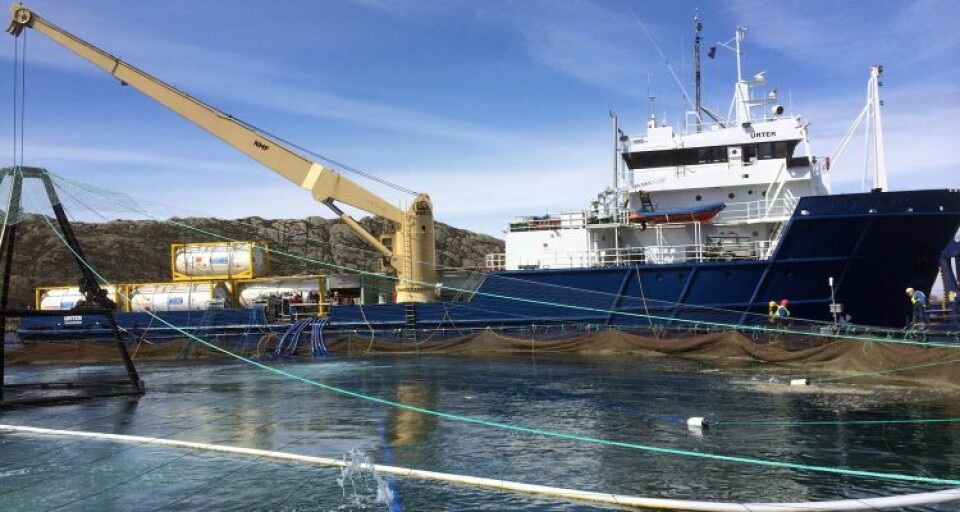
Treatment trends head the right way
Statistics published today reveal that the sale of delousing medicines, antibiotics, H2O2 and medicines used against intestinal worms all declined last year.
According to figures released by the Folkehelseinstituttet, the volume of delousing agents (in kg terms) fell considerably in 2016 – not due to the increased efficacy of the drugs but due to the increasing removal of parasites with other methods such as hot water, freshwater and mechanical removal. Measured by treatment doses, use of delousing drugs declined by about 50 per cent1. There was an increase in sales of teflubenzuron, while use of the other means against lice has decreased.
Meanwhile hydrogen peroxide consumption – which is used to treat both lice and AGD – fell by 40% compared with the year before, the first decrease since 2009.
Sales of antibacterial agents for use in farmed fish in Norway continues to decline. Sales have fluctuated over the period 2007-2016, but because sales are very low, small variations in the number of disease outbreaks are reflected in the statistics. In relation to the biomass of fish produced, the changes in the sales of antibacterial agents for farmed fish are marginal and sales are very low; the amount antibacterials that have been sold in recent years corresponds to their use in an estimated 0.5-1% of farmed fish.
Treatments against intestinal worms consistently decreased during 2004-2010. From 2011 sales of praziquantel rose significantly year-on-year, before falling back by almost 50% in 2016.
Other treatments
Formaldehyde has long been used against surface infections of fish in fresh water caused by parasites, bacteria and fungi but 2016 was the first year its consumption has been registered.
Sales of bronopol, which is also used against surface infections in fish in freshwater, were relatively stable in the period 2010-2012, before rising from 2013, although 2016 saw a slight decrease in the use of this agent.
Consumption of isoeugenol, which is used a sedative in connection with delousing and vaccination, rose sharply after it received marketing approval in 2013. In 2016, consumption of isoeugenol for the first time decreased, while sales of the anaesthetic benzocaine rose and sales of metakain, another anaesthetic, is relatively unchanged compared to the previous year.
1Source: Department of Food Safety and Infection Biology, Veterinærhøgskolen.























































